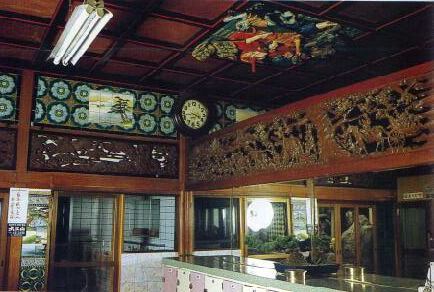Like this post? Help us by sharing it!
It is pretty well known that Japan is a land of natural hot springs. You may also be aware of the long history of bathing in Japan, a nation which was extolling the hygiene and relaxation benefits of a long soak when us Brits still thought taking a bath was a sure-fire way to an early grave! (click for an interesting history of bathing) What perhaps isn’t so well appreciated is quite is the sheer volume of bath houses across the whole of Japan. There are famous onsen areas such as Hakone, Kusatsu and Beppu where you can find a huge range of natural hot spring baths from the one pool variety with very basic facilities to the most luxurious spas where beautiful gardens and outdoor hinoki wood baths combine with massage and spa treatments for the ultimate relaxation experience. However, it is not just these famous areas that boast bath houses. In fact nearly very town in Japan will have a public bath. Most are not onsen but sento, bath houses where the water is heated from the mains in a more conventional fashion! But even without the mineral benefits of their volcanic cousins, sento still provide a great relaxation and social experience.
So without further ado, let’s move on to the purpose of this series of posts: I love onsen and sento. Ever since I first immersed myself in the steaming hot waters of a Kyoto bath house surrounded by members of the local Yakuza gang I was hooked. And so this series will be dedicated to my Japanese bath experiences. Every time I get naked, you get to read about it! But do not worry – read is the important word. No pictures!
Sunday 12th October 2009: Kyoto – Funaoka Onsen
Kyoto is not a place usually associated with bathing. However, as the capital of Japanese history and culture and a city where traditional ways live on more than in most, the city offers a fantastic range of bath houses. If you want onsen you will have to travel outside the city to Kurama just to the north east, but if you are just looking for a good Japanese bath there are plenty to choose from.
This trip to Japan began for me with a stay at Kyoto’s Brighton Hotel, a top 4 star establishment located north of the city centre, close to the Imperial Palace. This is not an area I had stayed in previously so I was on the look out for a good bath option. After all, 10 hours on a plane can leave you feeling pretty drained and in need of relaxation and refreshment. Fortunately the concierge was on hand to give me what transpired to be a superb recommendation.
Funaoka Onsen is to be found in the narrow back streets just north of the Nishijin textile area. I was on a bike and therefore it took a little bit of finding as I tried to be good and not go the wrong way down the one way streets, a policy I was eventually forced to abandon! However, after a short while trying to find my way down the streets not marked on the map provided by the hotel, I came across the building I was looking for. The first thing that was immediately apparent was this place is popular. Sunday night is always a good night for going to the bath house but there were perhaps 20 bicycles parked up outside the entrance. This is not, in my experience, usual. As you step in through the ‘Yu’ curtain shoes are deposited as you would expect and there is a small wooden reception counter where you hand over your 340 yen. It is always good to remember that towels are not usually provided at sento (you can rent them or buy if you do arrive towel-less) so it is a good idea to bring your own. Hotels don’t mind you taking theirs as long as you bring them back!
Funaoka Onsen is not in actual fact, an onsen at all, but rather a classic Taisho era sento in a residential neighbourhood close to Daitokiji Temple complex. This local style sento has bags of character and provides a fantastic Japanese bath experience for first timers and aficionados alike. The changing rooms are surrounded by a dramatic carved wooden frieze depicting scenes from Taisho era life including it would seem, soldiers doing battle during the several expansionist wars of that time. Much of the building itself is constructed from blue granite which so characterised architecture at that time. As you sit in the outside hinoki wood bath the whole building appears to be almost floating as you look across to a small pond that deceptively runs underneath the main structure. Look out for the giant carp gliding through the dark waters.
The bath house itself offers a wide range of different baths amongst them a bath with powerful jets to massage your body, one with a stream of water that pours down ferociously upon your head and back, a medicinal bath with added herbs as well as an outdoor hinoki ofuro (Japanese Cypress). And of course the obligatory cold plunge bath for cooling off after a long session in the sauna. For anyone who enjoys the Japanese bath experience Funaoka Onsen is a fantastic place to go for a long soak in historic surroundings.


